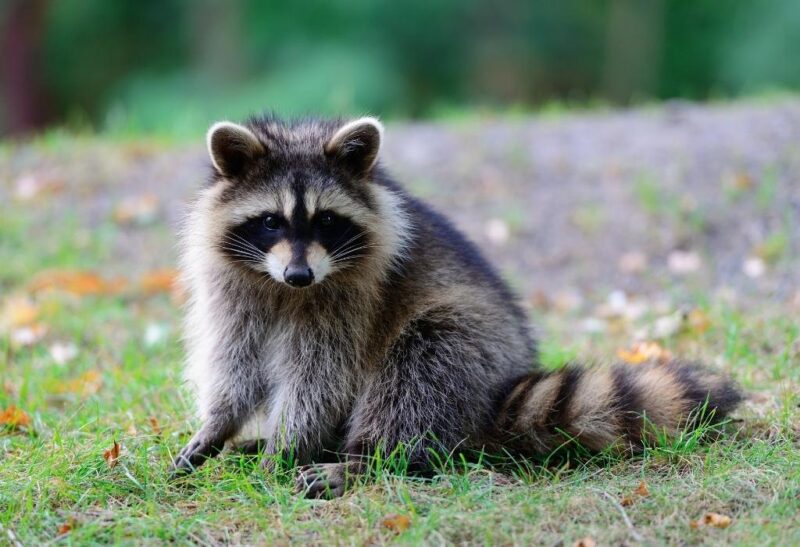Raccoons are cute, smart, and fun to watch but can pose health risks to humans. Depending on where you live, these furry creatures could suddenly appear out of nowhere.
Although most of them are found in the wild, some of them may be in the cities, roaming in the streets and your neighborhood. What should you do, then?
The different types of raccoons are Procyon cancrivorus, Procyon pygmaeus, and Procyon lotor, which can be found in North America. All of them have a “black mask” on their faces, but they can easily be distinguished from each other through their sizes, body fur, and diet.
Contrary to what some people may think, the raccoon is not a rodent. Therefore, they are not related to rats and mice.
Raccoons are also not marsupials, which means they are not relatives of bandicoots, koalas, and opossums. In this article, you will learn some important facts about raccoons and how to deal with them.
Table of Contents
What Is a Raccoon?
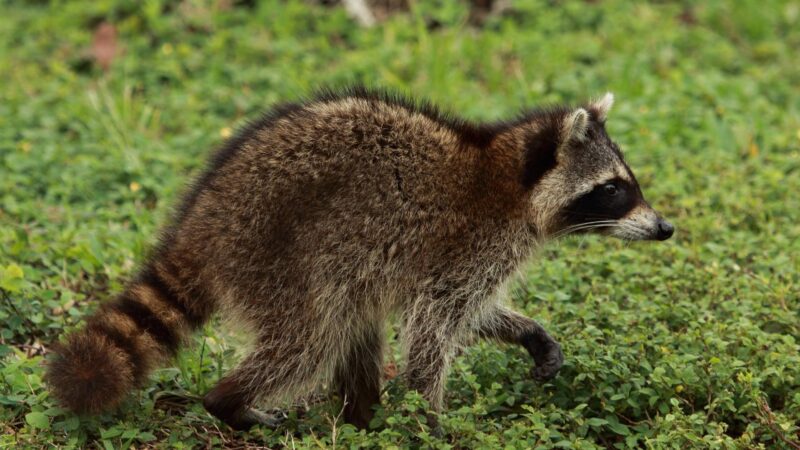
A raccoon is a mammal that belongs to the Procyonidae family, which includes cacomistles, coatis, kinkajous, olingos, olinguitos, and ringtails. Their ancestors were said to have originated in Central America.
However, raccoons are native to North America and have spread to other parts of the world, including Europe.
During the 17th century, English naturalist and botanist John Ray believed that raccoons have similarities with foxes. He then published the raccoon’s scientific name as “Vulpi affinis Americana.” But in 1758, Swedish botanist Carolus Linnaeus, who is also known as the father of modern taxonomy, called it Procyon.
Raccoons were originally classified as bears and were called “long-tailed bears” and “washer bears.” Interestingly, the English name “raccoon” came from the root word “aroughcun” (ahrah-koon-em), a native Powhatan (Virginia Algonquian) term which means “an animal that rubs, scrubs, and scratches with its hands.”
What Do Raccoons Look Like?
At first glance, raccoons look like red pandas, which are not pandas. In fact, red pandas were described in 1825 as members of the raccoon family. This is probably because they have similar skulls, teeth, and colored ringed tails. But later, red pandas were declared the only members of the Ailuridae family.
Depending on the species, raccoons have 4-7 colored rings on their heavily furred tails. These bear-like animals have round eyes, short ears, pointed muzzles, and very sharp claws. Males are commonly bigger than females. Raccoons living in the northern part are larger than those that live in the south.
What makes raccoons very recognizable is the black fur that covers their eyes. Therefore, it looks like they are wearing black masks, which give them the name “masked bandits.” As nocturnal thieves, raccoons are believed to be using their black masks to help reduce glare and enhance their ability to see clearly at night.
Raccoons have pear-shaped bodies covered with black, light gray, or brown fur with some white stripes. They have four feet, with the front pair shorter than the hind pair. Each foot has five toes, and its front legs are similar to human hands. This is why raccoons can grab different objects, such as food, jars, and doors.
How Many Species of Raccoons Are There?
There are around 18 species of procyonids (in the Procyonidae family), but there are only seven species of raccoons. Six of them are in South America, while only one is in North America. This North American raccoon (Procyon Lotor) is the most common raccoon species. In Spanish, their common name is mapache comun.
Common Raccoon Species
Procyon Cancrivorus
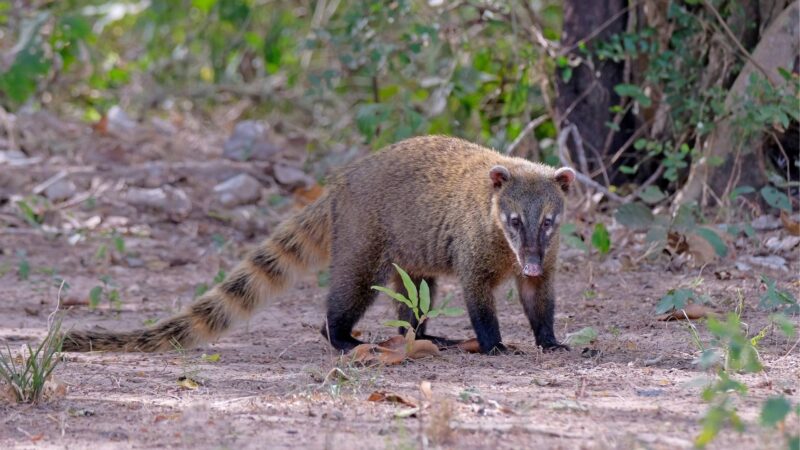
Also called crab-eating raccoons, Procyon cancrivorus can be found in Costa Rica, Northern Argentina, Uruguay, and Eastern and Western parts of Paraguay. This raccoon species are 54-65 cm long, and their tails are about 25-38 cm long. Adults weigh 3-7 kilos (6.6-15.4 lbs), and females are mostly smaller than males.
Crab-eating raccoons look similar to the North American raccoons, except that they look thinner because they lack underside fur, and their black mask fades behind the eyes. Aside from crabs, they also eat molluscs and other crustaceans. This is why their teeth are much stronger than those of the North American raccoons.
Procyon Pygmaeus
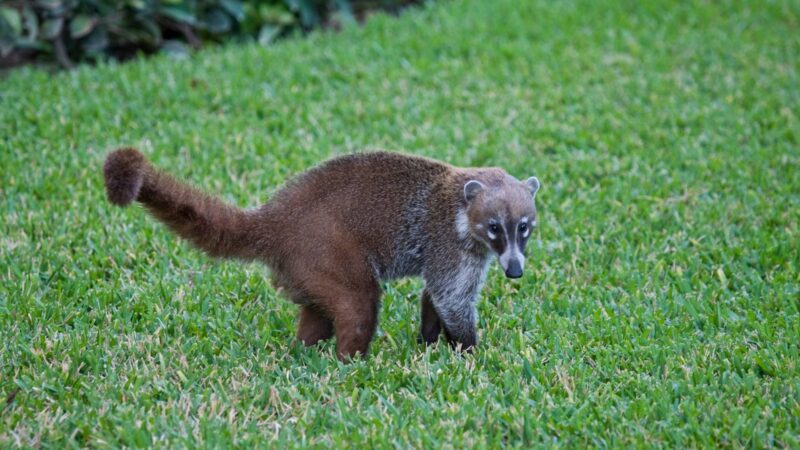
Also called the Cozumel raccoon, Procyon pygmaeus is the smallest raccoon species, with an average length of 99.9 cm (39.33 in). As of November 2017, this raccoon species holds the Guinness World Records for the world’s smallest raccoon. Procyon pygmaeus has a total length (including its tail) of 58–82 cm.
As the name suggests, Cozumel raccoons are endemic to Cozumel Island in Mexico. According to the International Union for Conservation of Nature (IUCN), this so-called dwarf raccoon is listed as Critically Endangered, with only 192 adults existing, as of 2016. Unfortunately, its population continues to decrease.
Procyon Lotor
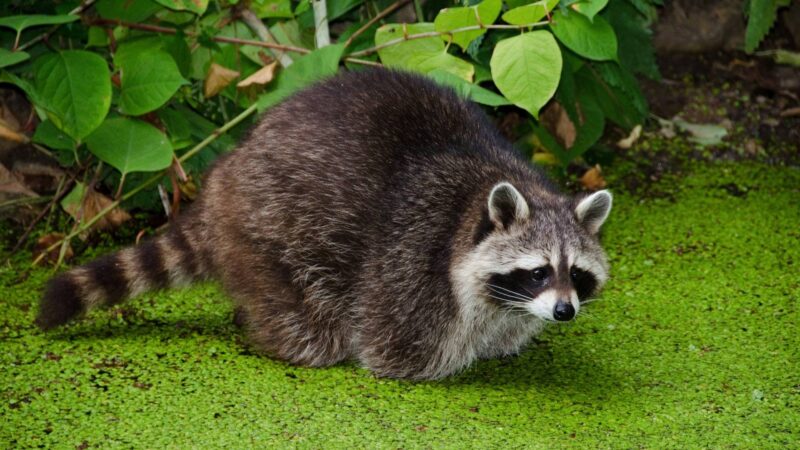
The Procyon lotor is the most common among all raccoon species. North American raccoons are found in most parts of the United States, Canada, and South America. They are 2-3 feet long (including the tail) and 9-10 inches tall. Adults weigh 4.5-13.5 kilos (10-30 lbs) and have 40 sharp teeth.
Like other raccoon species, the Procyon lotor has 5 sharp, nonretractile claws on each finger, and they can rotate its hind feet to a full 180 degrees. Raccoons are also generally good swimmers, excellent climbers, and can run as fast as 15 miles per hour. Despite having heavy bodies, raccoons are also great swimmers.
Is the Raccoon Population Increasing?
The population of raccoons is increasing in many places. Unlike the Pygmy raccoon (Cozumel raccoon), which is now classified as Critically Endangered by the IUCN, the common raccoon is listed as Least Concern.
Based on a 2019 study, raccoons are spreading rapidly around the world due to gradual global warming.
Which Countries Have Raccoons?
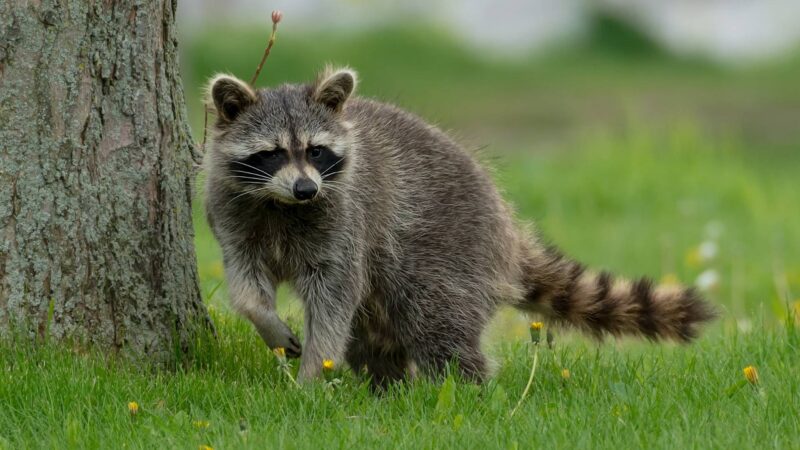
Aside from the United States, many other countries have raccoons. These animals were introduced in Germany back in the 1930s, and are spread in several parts of Europe, as well as Central and East Asia. Raccoons arrived in the Caribbean islands in the 1950s and in Japan in the 1960s.
Raccoons were also reported to be present in Azerbaijan and Iran since 1991. It is illegal to import raccoons in Australia, but some zoos have them. On the other hand, raccoons are widespread in Mexico and Canada. In fact, Toronto is now dubbed the “raccoon capital of the world.” Canadians call them ‘trash pandas.”
Are There Raccoons in Asia?
Raccoons are also invading Asia, such as Iran and Japan. A lot of Japanese that have imported these cute but dangerous animals are believed to have been influenced by the 70s animated TV show, “Rascal the Raccoon.” But once the raccoons became adults and vicious, they were soon released into the wild.
In China, raccoons are called huàn-xióng, which means “wash bears.” Chinese don’t treat raccoons as house pets but are rather kept in zoos. According to a study, some of them carry Baylisascaris. But fortunately, no human was infected. Meanwhile, India, Singapore, Vietnam, and the Philippines have no raccoons.
Why Are There No Raccoons in Europe?
For the record, there are raccoons in some European countries, such as Estonia, Germany, Lithuania, Russia, Spain, Ukraine, and the UK. Nevertheless, their population is significantly low compared to the US and Canada. This is after the animal was included in the list of Invasive Alien Species of Union in 2016.
How Do Raccoons Behave in Cities Versus in the Wild?
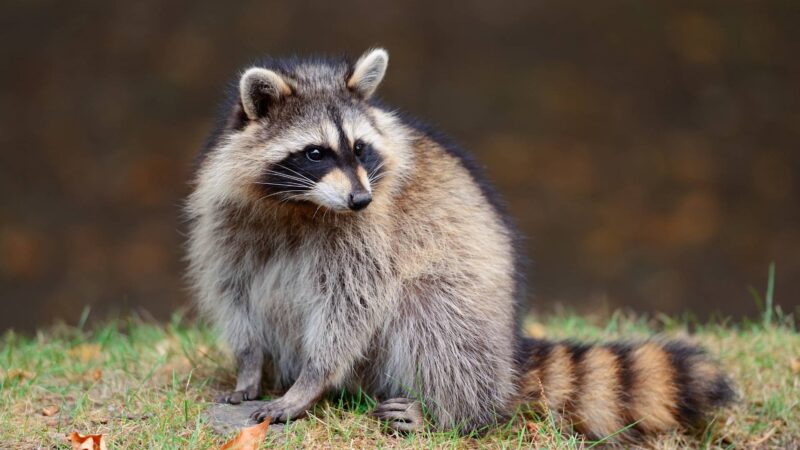
In the wild, raccoons live in forests and woodland areas that are near bodies of water. They build their nests mostly in caves, rock crevices, and tree cavities.
But then, most of them use underground burrows made by other animals. Raccoons are known to be solitary creatures but may live in a common den during winter.
On the other hand, raccoons can live near human habitats. In suburban and urban environments, they live in abandoned buildings, garages, chimneys, and attics. These nocturnal creatures usually enter houses by climbing trees that touch the roof. Raccoons build nests where they give birth and care for their kits.
Frequently Asked Questions
What Do Raccoons Eat?
Raccoons are generally omnivores, which means they eat animals and plant materials. As opportunistic eaters, they eat apples, berries, birds, frogs, nuts, and rodents. Invertebrates, such as crayfish and earthworms, are also part of their diet. Raccoons in cities are scavengers and will eat discarded foods in garbage cans.
What Are Raccoon Babies Called?
The male raccoon is called boar, while the female is called a sow. Females give birth to around five babies called kits, which are less than 100 grams right after birth. Baby raccoons are usually born in early spring. The eyes and ears of newly born kits are still closed and will open once they are 2 1/2 to 5 1/2 weeks old.
Are Raccoons Bad to Have Around?
Raccoons are bad to have around. To start with, these mammals can carry rabies which can be transmitted to humans through their bites and scratches. If accidentally inhaled or swallowed, raccoon poop can also lead to Baylisascaris infection. This deadly disease is caused by raccoon roundworms and their eggs.
Some people keep raccoons as pets, but most states consider them illegal. This is because they are wild animals and don’t make good house pets.
These masked bandits are temperamental, and even young raccoons may attack at any time for no reason at all. Not to mention, they may also destroy your plants and vegetation.
Raccoons are wild animals and are considered pests. Although they seem to be friendly and playful, these scavengers are very unpredictable. Raccoons may also steal your food or cause damage to your house and garden. So, if you spot one nearby your property, scare it away or call an animal removal service.
List of Sources
And Now for Something a Little Different – Raccoons. (2022). University of Wisconsin-Milwaukee.
Is a Red Panda a Bear? And More Red Panda Facts. (2020). Smithsonian’s National Zoo & Conservation Biology Institute.
Phillips, N. (2005). Procyon cancrivorus. Animal Diversity Web.
Baker, R. (2013). Procyon pygmaeus. Animal Diversity Web.
Procyon lotor – Raccoon. (2004). University of Wisconsin-Stevens Point.
